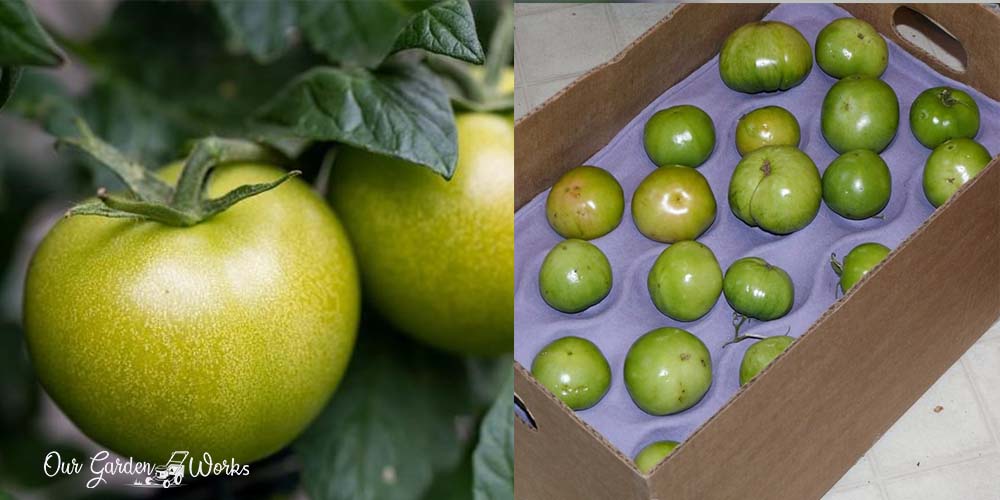Learning how to store green tomatoes will give just enough garden tomatoes during the colder seasons.
If only we could extend the growing season to ripen the tomatoes before the cold comes. However, as gardeners, we have to do what needs to be done to save our supplies from turning into food waste.
Before we head to the different ways of storing unripe tomatoes, you need to learn a fun fact about this delicious fruit.
Tomatoes along with apples and bananas emit ethylene gas that helps them ripen even when detached from the plant. Other fruits and vegetables that sit next to these fruits will also ripen with them.
Green tomatoes ripened by ethylene will not taste the same as the ones ripened on the plant through time. Moreover, some fruits are producers of ethylene and some are just sensitive to it.
The notorious ethylene producers are as follows:
- Apples
- Avocados
- Bananas
- Cantaloupe
- Kiwi
- Peaches
- Pears
- Peppers
- Tomatoes
On the other hand, ethylene sensitive fruits and vegetables are as follows:
- Apples
- Asparagus
- Avocados
- Bananas
- Broccoli
- Cantaloupe
- Collard Greens
- Cucumber
- Eggplant
- Grapes
- Honeydew
- Kiwi
- Lemons
- Lettuce
- Limes
- Mangoes
- Onions
- Peaches
- Pears
- Peppers
- Squash
- Sweet Potatoes
- Watermelon
Now, as you store your green tomatoes make sure that you don’t place them near the ethylene-sensitive ones to prevent them from rotting.
Let’s now head over to the storing process.
How To Store Green Tomatoes and Enjoy Garden Tomatoes Until December
Depending on your location, the cold weather typically starts to creep in in October. As soon as your plants start to feel the cold breeze, they will start to withdraw and stop supplying nutrients in preparation for dormancy.
Harvesting Green Tomatoes
As tomato plants prepare for dormancy, you must harvest your green tomatoes that have a higher chance of ripening.
You should only harvest those that are at least around the size of a baseball. Smaller than that has not reached the maturity that will help them ripen indoors.

Sorting The Green Tomatoes Based on Ripeness
Some gardeners skip the sorting part and end up ripening their green tomatoes all at once.
While that’s ideal for a number of tomatoes, It can cause food waste for a box full of green tomatoes that you may not consume in a day or a week.
You can sort the harvested tomatoes into three categories:
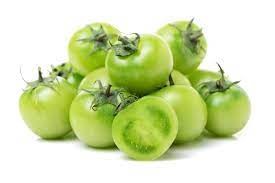
For long-term storage: Tomatoes in this category should include the greenest tomatoes that have no yellow and red spots or any signs of ripening. These can last in storage for almost 12 to 14 months.
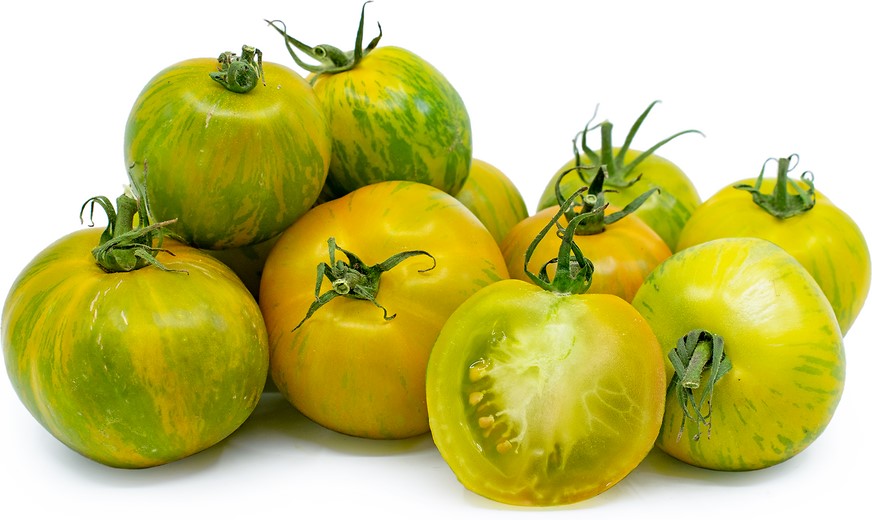
For short-term storage: Tomatoes that are still green but start to turn yellow are about to ripe within 7 to 10 days in the storage. These tomatoes should not be stored near the green ones since they are actively emitting ethylene gas that will speed up the ripening process.
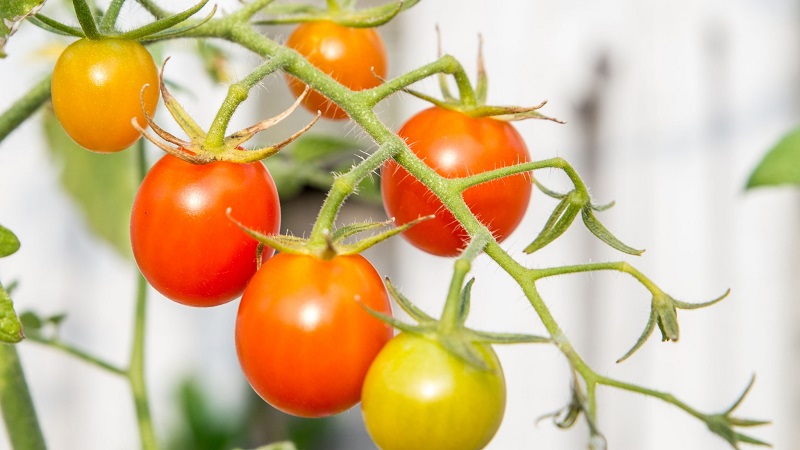
For immediate use: Tomatoes that are already red or almost red should be consumed immediately. These are the ones that can be stored in the refrigerator for immediate consumption.
Now, let’s start storing your tomatoes! Keep in mind that the ripening tomatoes should be kept away from the green ones.
First off is hanging them!
1. Hang Them in Your House
If for some reason you want to put a rustic feel in your kitchen while waiting for your green tomatoes to ripe, you can hang them along with their stems.
Since tomatoes will eventually die off during winter, some gardeners might as well uproot them along with the nearly ripened tomato fruits.
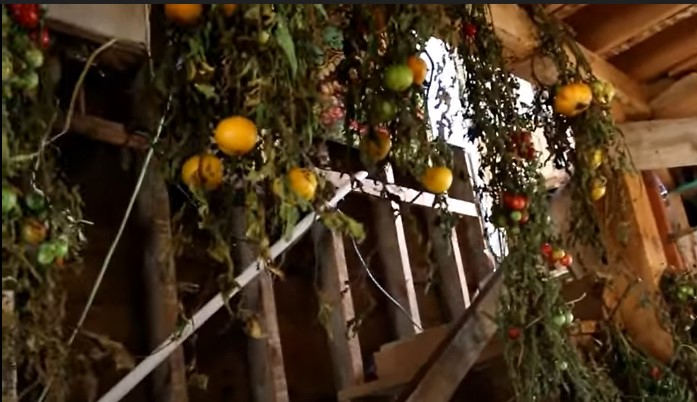
Even uprooted, tomato plants are still sending all of their energy to their fruits. By hanging them upside down, you’re speeding up their ripening process. You can keep the leaves on and aesthetically hang them in your kitchen. Just remember to keep them out of reach of your curious children and pets.
Some gardeners are also hanging their peppers along with tomatoes to prevent them from rotting before they even ripen. They may ripen a bit slower but the quality looks close to tomatoes grown outdoors.
2. Cover Them in a Newspaper
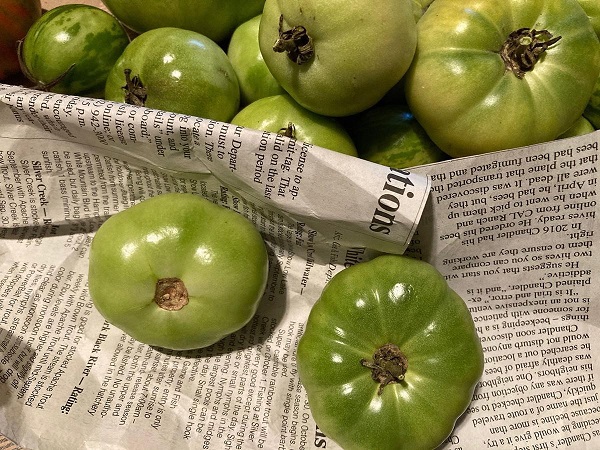
One of the common storage practices of homeowners is covering the green tomatoes with newspaper to prevent the ethylene from spreading to other tomatoes.
If you have a lot of spare newspaper or scratch paper, cover the green tomatoes and place them in a dry box.
If you’re looking into speeding up the ripening process, you can place a banana or an apple in the box. You can do this for tomatoes in both short and long-term storage categories.
3. Put Them in a Box
If you are dealing with boxes of unripe tomatoes, it can be too time-consuming to cover them one by one.
So, some gardeners no longer clever them in paper and just layer them in a dry box. They have to be purely green tomatoes, so they can last for up to 2 months.
Place the boxes of green tomatoes for long-term storage in your basement and away from sunlight. If you have a root cellar, that would be best for storing your green tomatoes. Just make sure to place them apart from ethylene producers and ethylene-sensitive produce.
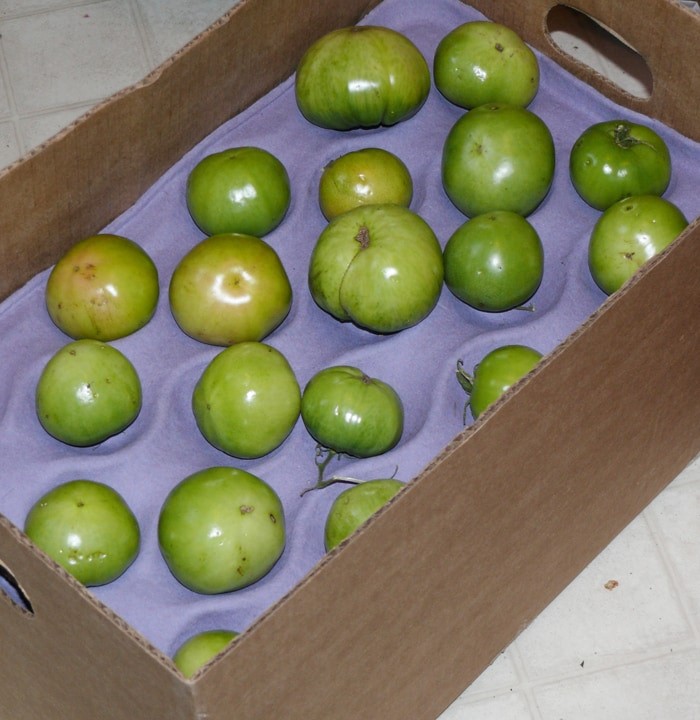
Pro Tip: Keep in mind that you have to check the tomatoes in your storage from time to time. As soon as you see ripening tomatoes in the batch for long-term storage, separate them and include them in your stash of tomatoes in the kitchen.
Tips for Storing Green Tomatoes
Discovering how to store green tomatoes will provide you with some food survival skills that have been used by our ancestors back in the day.
You and your family will get to enjoy a generous supply of garden produce and save money from buying them in supermarkets during the colder seasons.
Since preserving and storing food are old practices, here are some tips from the most experienced gardeners on how to store green tomatoes:
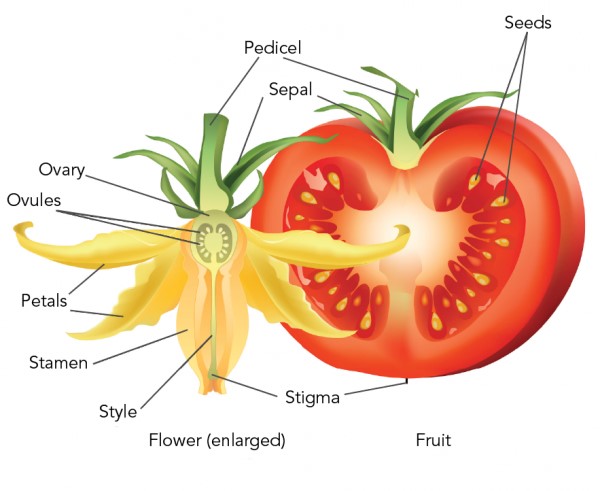
- Keep the sepal and pedicel of a green tomato during harvest time. Keeping those parts will help speed up the ripening process of your tomatoes.
- Tomatoes are temperature sensitive. The ideal temperature for storing green tomatoes should be around 50F to 70F. If you want to control the ripening process of tomatoes, you can warm them inside your home to attain their ideal ripening temperature which is between 68F to 77F.
- To speed up ripening the process of your partially green tomatoes, you can store them in your kitchen or pantry with a banana or an apple. In a few days’ time, you’ll see them strikingly red and ready to be served.
- Check your stored green tomatoes daily or even every other day to look for any signs of ripening tomatoes. Otherwise, you might end up with a rotten batch of tomatoes.
What To Do With Excess Batch of Ripe Tomatoes
If you happen to ripen too many green tomatoes and now wondering what to do with them, here are different ways on how to use them differently:
Method 1: Turn Ripe Tomatoes into a Homemade Tomato Sauce

If you ever wondered how tomato sauce is made, now is the best time to learn and do it with your excess ripe tomatoes. Here’s how:
A. Cooking The Tomato Sauce
- Remove the core of the tomatoes and slightly slice the bottom in four sections for easy peeling.
- Boil a pot of water and prepare a bowl of ice water.
- Blanch the tomatoes in the boiling water until their skin starts to wrinkle.
- Remove the tomatoes from the boiling water and place them in ice water.
- Start peeling their skin and place them in a blender or food processor. Blend them depending on the consistency that you want for your tomato sauce. Longer mixing can give you a creamy sauce while pulse mix gives you a chunky consistency.
- Put a pan on medium heat and cook the tomato paste to remove the excess water content and get the consistency that you want. You may also add the spices and achieve the taste that you want. Some people add basil and rosemary to add some flavor to your tomato sauce.
- Mix a ¼ cup of lemon juice or vinegar to balance the acidity and make the tomato sauce suitable for canning.
- Cook it for 30 minutes to 90 minutes. Cooking it for 30 minutes will give you runny consistency while cooking it for an hour or more will give you a thick and creamy tomato sauce.
- Let the tomato sauce cool down before transferring them in jars for canning.
B. Canning The Tomato Sauce
If you have a pressure canner you may use that to can your tomato sauce. Otherwise, you may also use the hot water method.
For the pressure canner method, here’s how you can do it:
- Leave a ½ inch of headspace for every jar of tomato sauce.
- Use a spatula to remove the air bubbles in your tomato sauce jars.
- Put water in the pressure canner and place the jars inside.
- Cover the pressure canner and let the water boil for 10 minutes.
- Place a 10-pound weight and monitor the gauge until it reaches the 10 pound level.
- Once the weight starts hissing, start your timer and set it to 15 minutes.
- Once the time is up, turn off the heat and let the pressure canner release the excess pressure naturally. You will see the pressure going down in the gauge meter attached to the pressure canner
- Open the lid and let the jars sit on the boiling water for 10 minutes.
- Using a jar lifter, place the hot jars in a level counter top with a towel underneath. Let them sit undisturbed for 12 to 24 hours to properly seal.
- The next day, place a note for the date so you can keep track of its expiry date. You can store your canned tomato sauce for a year. If you place it in the fridge, it can last for a week and when frozen, it can last for 3 months.
Method 2: Dehydrated Tomatoes
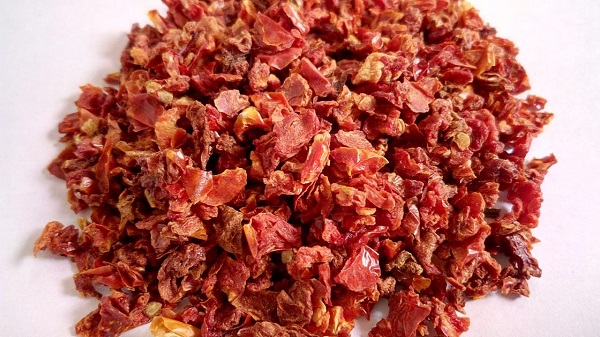
Another way to use your excess ripe tomatoes is to dehydrate them. Dehydrated or sun-dried tomatoes make a good additional flavor to pizza or any sauteed dish.
So here’s how you can dehydrate them even during wintertime.
- Wash the tomatoes and remove the core.
- Cut them into ¼ inches so you can achieve a leathery texture in less time. Bigger chunks will take more time to dehydrate.
- Layer them up in your dehydrator and set the temperature at 150 degrees Fahrenheit.
- Dehydrate the tomatoes for 10 hours and place them in a clean airtight jar.
Frequently Asked Questions(FAQs)
Can I refrigerate green tomatoes?
You can opt to store green tomatoes in the fridge. However, they will lose their flavor. So it’s best to leave them on the countertop or in a box and place them in a cool and darkroom in your house.
How do I keep tomatoes from ripening?
Prevent green tomatoes from ripening by keeping them away from sunlight. The temperature should also be less than 70F.
You should also keep them away from ripening tomatoes since the ethylene gas that they emit will eventually ripen the green ones.
How do you store green tomatoes so they ripen?
Tomatoes are temperature-sensitive. So, placing them in a warmer environment that is about 70F and above will ripen faster. You can also store them with an apple or banana to get soaked in ethylene gas and ripen faster.
Do tomatoes last longer in the fridge or on the counter?
If you will consume the tomatoes within a day or two, it’s best to keep them on the countertop to preserve their flavor.
However, if you will be using them at the end of the week or on a vague schedule, better keep them in the fridge to slow down the decay process.
Final Thoughts
We hope that this post gave you some ideas on how to store green tomatoes and what to do with the excess ripe ones.
Your efforts in keeping those green ones will help reduce food waste and support a sustainable lifestyle during the colder seasons.
If you find this post helpful, please don’t forget to share it with your friends. Also, let us know in the comments below about your experience in storing green tomatoes before the cold seasons.
